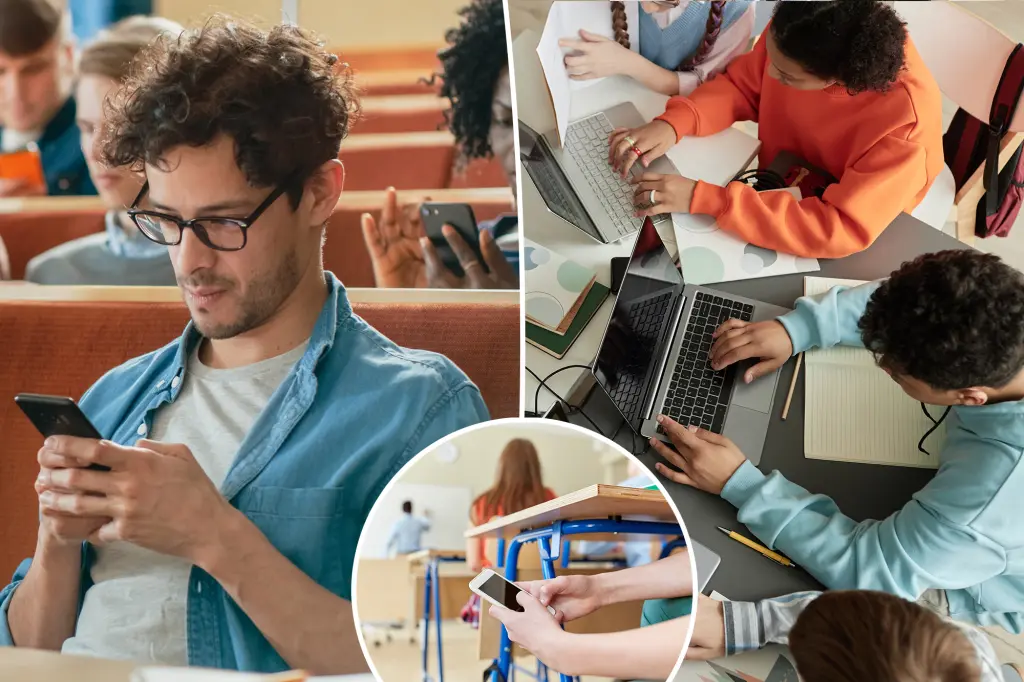Students Find Creative Workaround to School Cell Phone Bans
In a classic example of teenage ingenuity, Generation Z students across the country are finding clever ways to circumvent recently implemented cell phone bans in schools. Rather than accepting their disconnection from the digital world, these tech-savvy youngsters have revived a communication method that feels both innovative and nostalgic: collaborative Google Docs. As schools in at least 18 states enforce bell-to-bell bans on mobile devices for the 2025-2026 academic year, students are turning their school-issued laptops into makeshift chat rooms, proving once again that where there’s a will to communicate, there’s always a way.
The trend was highlighted by teacher and content creator Valerie Elizabeth Dickinson, whose TikTok video went viral after she revealed the students’ crafty solution. “A bunch of high school kids are creating a Google Doc with their friends, they all have real-time access to it, and they just type into it during class time,” Dickinson explained with amused appreciation. “So, they’ve basically reinvented the AOL chat room,” she added, drawing a parallel to the popular messaging platform of the early 2000s that many of these students’ parents likely used during their own teenage years. The observation sparked nostalgia among millennials and older generations who remember life before smartphones dominated social interaction, with commenters chiming in: “Wait until they rediscover passing notes,” and “This brings me back to 2001.” There’s something charmingly cyclical about watching Generation Z—a group defined by their digital nativity—revert to communication methods reminiscent of earlier internet eras.
The widespread cell phone restrictions come as part of a growing movement to address concerns about device dependency and digital distraction in educational environments. New York’s ban, which took effect on September 4th, was championed by Governor Kathy Hochul, who argued that smartphones were preventing meaningful learning and social engagement. “They’re not learning. They’re not engaging with other students. You walk into a hallway [in] a school that allows cell phones—the halls are silent,” Hochul stated, highlighting the eerie quiet of school corridors filled with students whose attention is captured by their devices rather than each other. The governor’s perspective reflects a broader concern among educators and policymakers about the impact of constant connectivity on academic performance, social development, and mental health among young people who have never known a world without instant digital communication.
Surprisingly, the restrictions have received positive feedback from many within school communities, including some students themselves. Twelve-year-old Maximilian “Max” Davidge from Manhattan’s Upper West Side told The New York Post, “I actually like the idea because if everyone is on their phone when the teacher is teaching, then no one will learn anything in school.” This pragmatic acceptance suggests that even digital natives can recognize the benefits of occasional disconnection, particularly in learning environments. Teachers report improved classroom engagement and more meaningful face-to-face interactions since the bans were implemented, suggesting that the policies may be achieving their intended goals of fostering more present and focused educational experiences. The restrictions align with growing research indicating that excessive screen time and social media use may contribute to attention difficulties, anxiety, and depression among adolescents.
Despite these positive outcomes, many students remain determined to maintain their digital connections throughout the school day. Social media platforms like TikTok showcase defiant teens proudly displaying their Google Docs workarounds with captions like “[Your] cell phone rule was never going to stop me from texting my [best friend]” and “Can’t ever silence us, queens.” These digital declarations of independence reveal how deeply integrated constant communication has become in teenage social structures. For many Gen Z students, being disconnected from their peers even for the duration of a school day feels unnatural and restrictive. Their innovative adaptation demonstrates not just technical savvy but the fundamental human need for connection and communication—especially during adolescence, when peer relationships are central to identity formation and emotional development.
The Google Docs texting phenomenon represents more than just teenage rebellion; it’s a fascinating case study in how different generations approach technology and communication. While school administrators implement policies based on legitimate concerns about distraction and educational outcomes, students respond with creativity that merges digital tools with old-school communication techniques. This technological call-and-response mirrors similar patterns throughout educational history, from passed notes to classroom whispers to calculator games. As schools continue navigating the complex relationship between education and technology, this latest adaptation serves as a reminder that policies restricting technology must account for the ingenuity and communication needs of young people. Whether through Google Docs, folded paper notes, or whatever method comes next, students will likely continue finding ways to exchange thoughts with their peers during the school day—carrying on a tradition as old as education itself.


